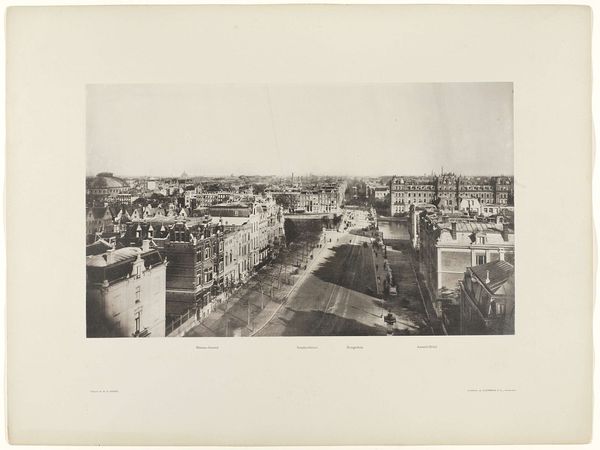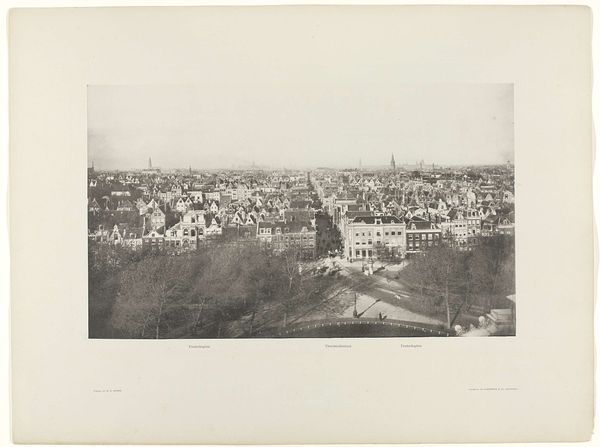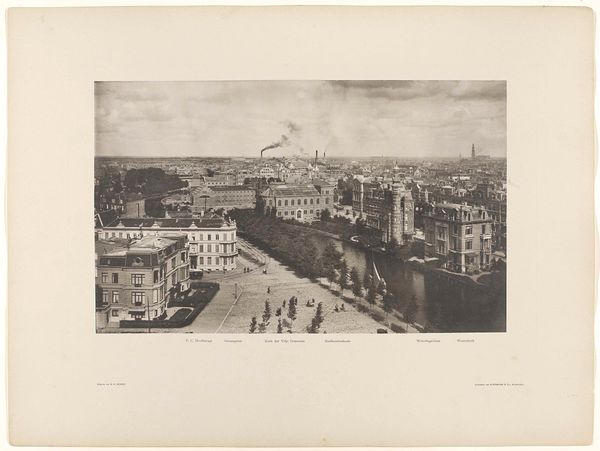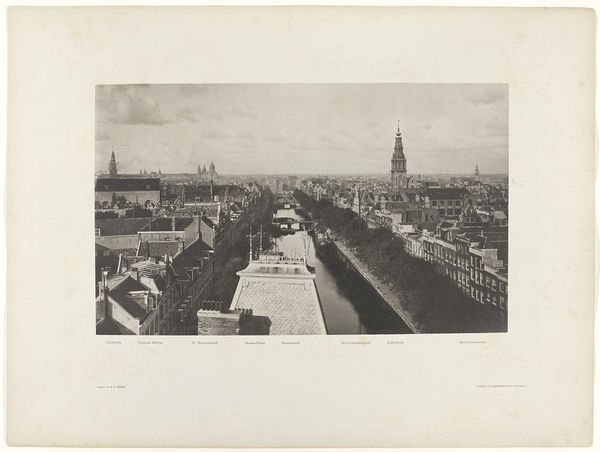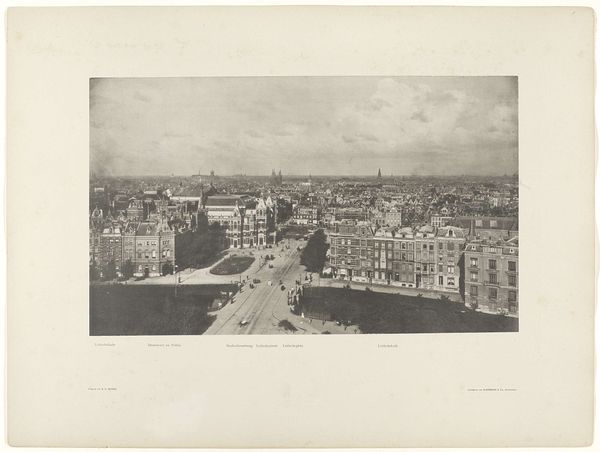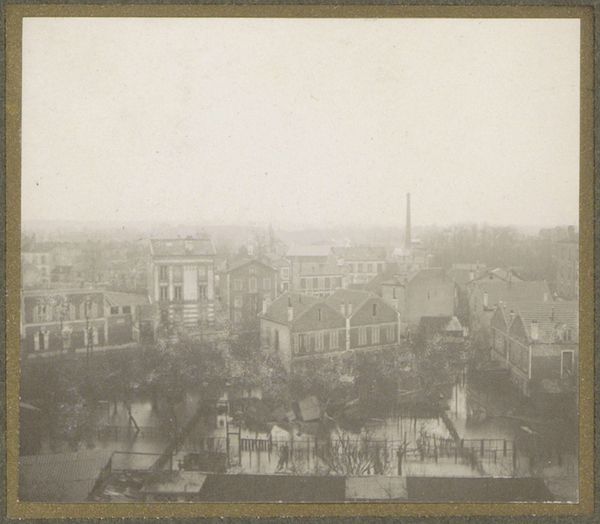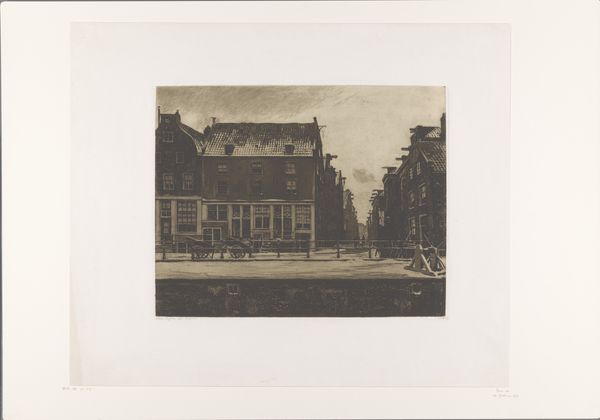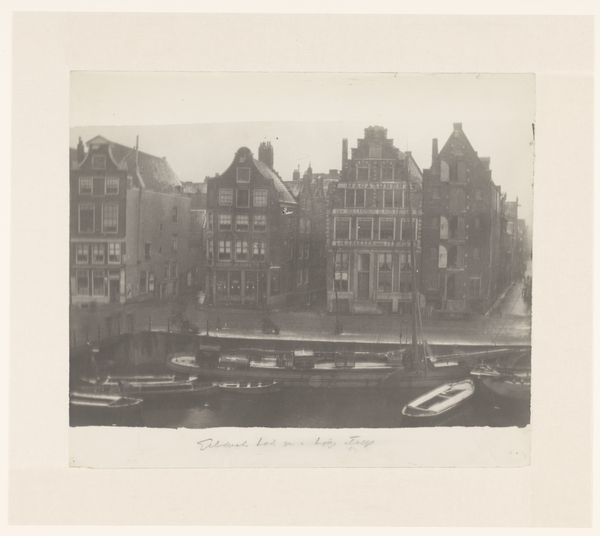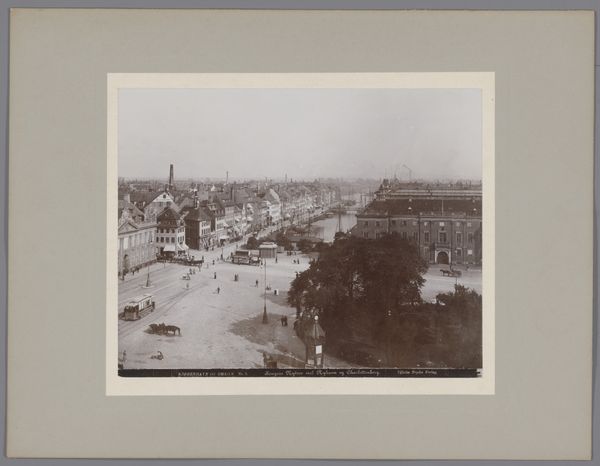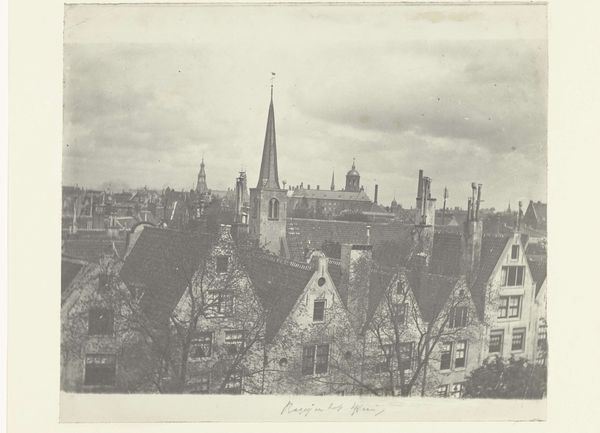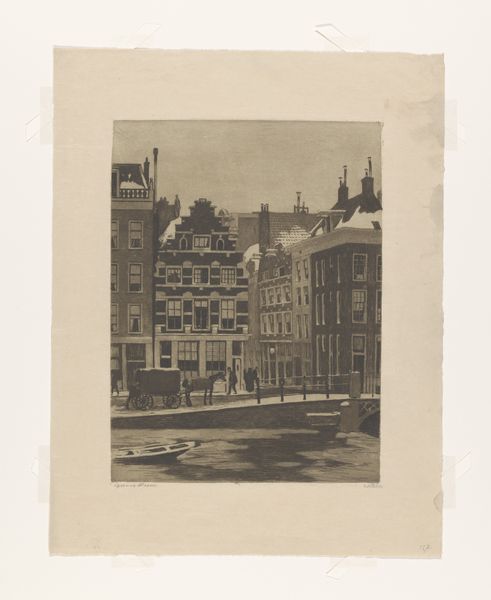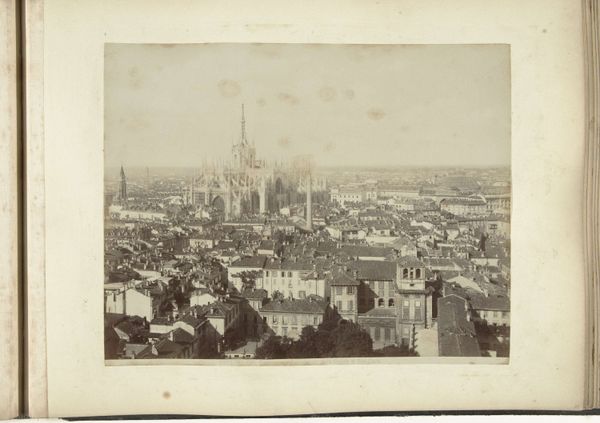
Sarphatistraat and Hoge Sluis, seen from the Paleis voor Volksvlijt; Frederiksplein and Weteringschans, seen from the Paleis voor Volksvlijt; Binnen-Amstel, seen in the direction of the Munt c. 1894 - 1898
0:00
0:00
print, photography, gelatin-silver-print
# print
#
photography
#
gelatin-silver-print
#
cityscape
#
realism
Dimensions: height 280 mm, width 463 mm, height 482 mm, width 641 mm
Copyright: Rijks Museum: Open Domain
These views of Amsterdam were captured by Gerrit Hendricus Heinen using gelatin silver print. It’s a process that involves coating a base, usually paper, with a layer of gelatin containing light-sensitive silver halides. Photography as a medium raises interesting questions about labor. Unlike painting or sculpture, where the artist's hand is evident in every brushstroke or chisel mark, photography relies on a complex interplay of technology, chemistry, and optics. The photographer captures the image, but the darkroom technicians, the manufacturers of the camera and film, and even the laborers who mine the raw materials for the photographic process, all play a crucial role in the final product. In these gelatin silver prints, Heinen captures the architecture and city planning of Amsterdam from a bird's eye view. This viewpoint speaks to the rise of industrialism and modernization, where cities became sites of mass production and consumption. The photograph itself becomes a commodity, produced and consumed within this expanding capitalist system. Looking at these photographs, consider not only the aesthetic choices of the artist, but also the intricate web of labor and technology that made them possible.
Comments
rijksmuseum about 2 years ago
⋮
At the dawn of the 20th century, Amsterdam’s rapidly changing face served as the setting for photographer and decorative painter Heinen. With camera at hand, he climbed tall buildings, such as the Paleis voor Volksvlijt (Palace for Art and Industry), which burned down in 1929, and the Rijksmuseum, to take his panoramas.
Join the conversation
Join millions of artists and users on Artera today and experience the ultimate creative platform.
